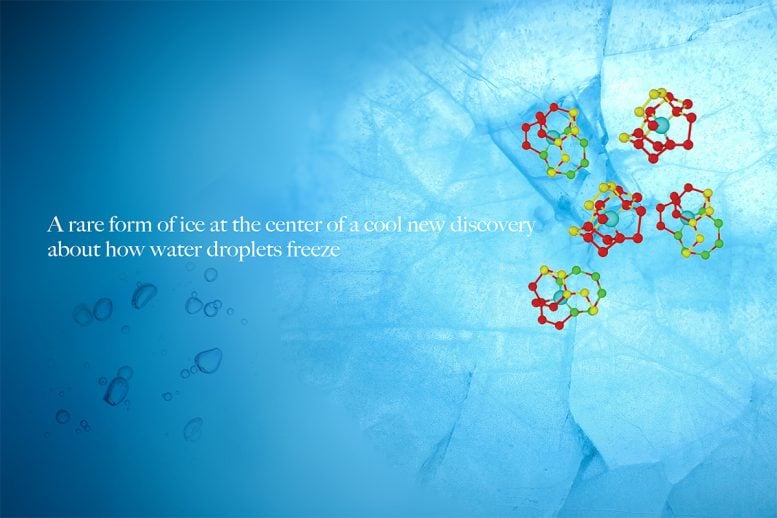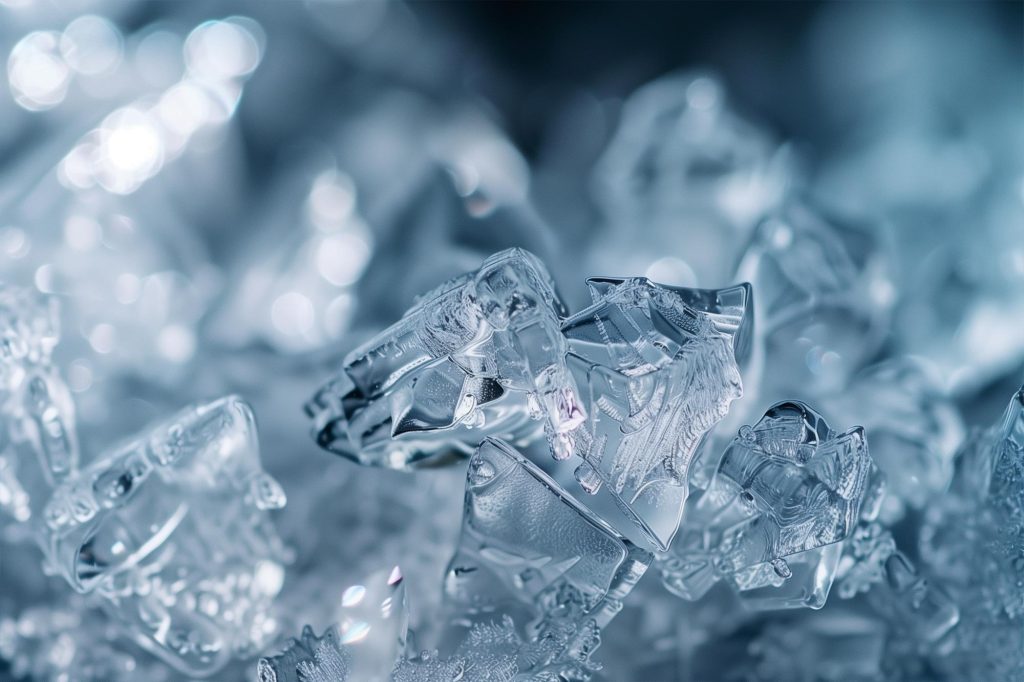Japanese researchers have discovered a new type of ice that forms near the surface of water, called “Ice 0,” that could redefine scientific understanding and have implications for technology and climate research. (Artist’s concept drawing). Credit: SciTechDaily.com
Japanese researchers have discovered a new form of ice, called ice-0, that seeds the formation of ice crystals in supercooled water. The study settles a long-standing debate by showing that ice-0-like structures can lead to ice nucleation near the surface of water droplets. The discovery improves our understanding of ice formation and has major implications for a variety of fields, including climate research and food science.
Ice is much more complex than most people realize, and science has identified more than 20 different types of ice that form under different combinations of pressure and temperature. Ice I, the type we use to cool our drinks, is one of the few types of ice that occur naturally on Earth. Recently, researchers in Japan discovered another type: Ice 0, an unusual type of ice that can begin to form ice crystals in supercooled water.
The formation of ice near the surface of liquid water may begin with precursors of tiny crystals with a structure similar to a rare type of ice called ice-0. Nature CommunicationsResearchers from the Social Collaboration Research Division “Frost Prevention Science” Institute of Industrial Science, University of Tokyo These ice-0-like structures indicate that water droplets may freeze near the surface rather than at their core. The discovery could solve a long-standing mystery and help redefine our understanding of how ice forms.
Ice Nucleation Process
Ice crystallization, known as ice nucleation, usually occurs heterogeneously, i.e., on a solid surface. This is typically expected to happen on the surface of a container of water, where the liquid meets the solid. However, this new study shows that ice crystallization can also occur just below the water surface, where it meets the air. Here, ice nucleates around tiny precursors that have the same characteristic ring-like structure as ice 0.
“Our simulations show that under isothermal conditions, water droplets are more likely to crystallize near the free surface,” said Gan Sun, lead author of the study, “which settles a long-standing debate about whether crystallization occurs more easily on the surface or in the interior.”

Researchers at the Institute of Industrial Science, University of Tokyo, have discovered that ice begins to form near the water’s surface via a structure similar to a recently discovered rare type of ice, which helps to better understand ice formation. Courtesy of Institute of Industrial Science, University of Tokyo
Pioneer of Zero Ice
The precursors of ice 0 have a structure very similar to supercooled water, so water molecules can crystallize from them more easily, even if they do not directly form into the normal ice structure. Small ice 0 precursors form spontaneously as a result of the negative pressure effect caused by the surface tension of water. When crystallization begins from these precursors, the ice 0-like structures quickly rearrange into the more typical ice I.
Lead author Hajime Tanaka highlighted the broad impact of the research, saying, “Our findings regarding the mechanism of water surface crystallization are expected to make significant contributions to a variety of fields, including climate research and food science, where water crystallization plays an important role.”
A more detailed understanding of ice and how it forms can provide valuable insights into a variety of research fields. This work could be particularly important in meteorology, for example, where ice formation from precursors like ice-0 can have a much more pronounced effect on tiny water droplets like those found in clouds. Understanding ice could also benefit technology sectors, from food science to air conditioning.
Reference: “Surface-induced water crystallization driven by precursors formed in negative pressure regions,” Gang Sun, Hajime Tanaka, July 26, 2024, Nature Communications.
DOI: 10.1038/s41467-024-50188-1


